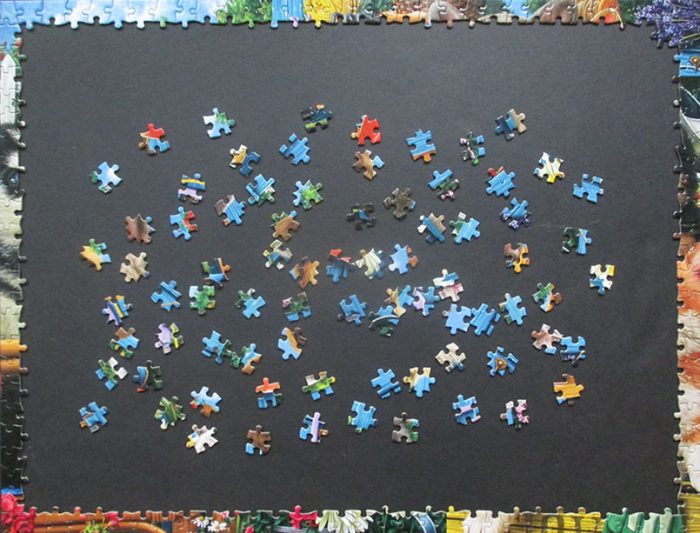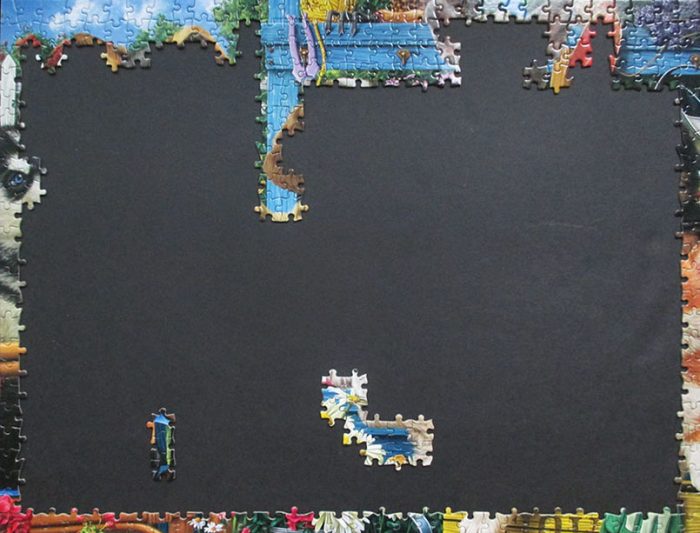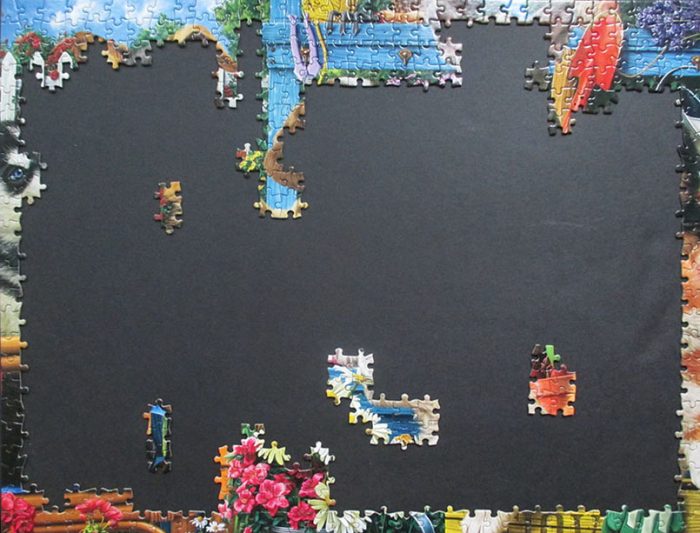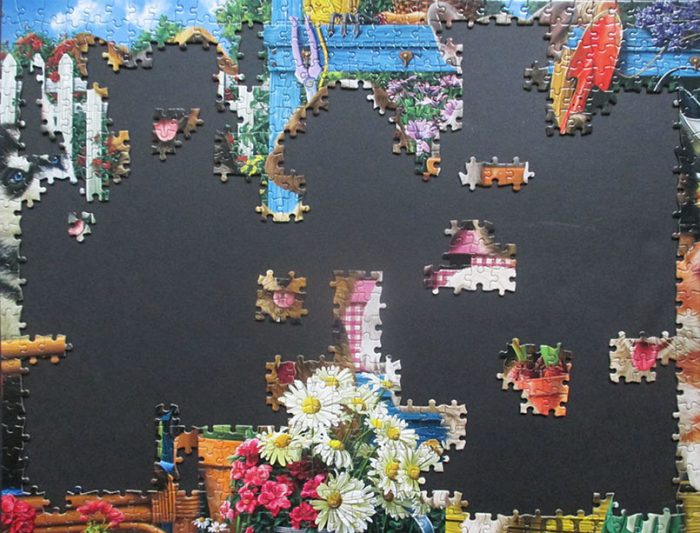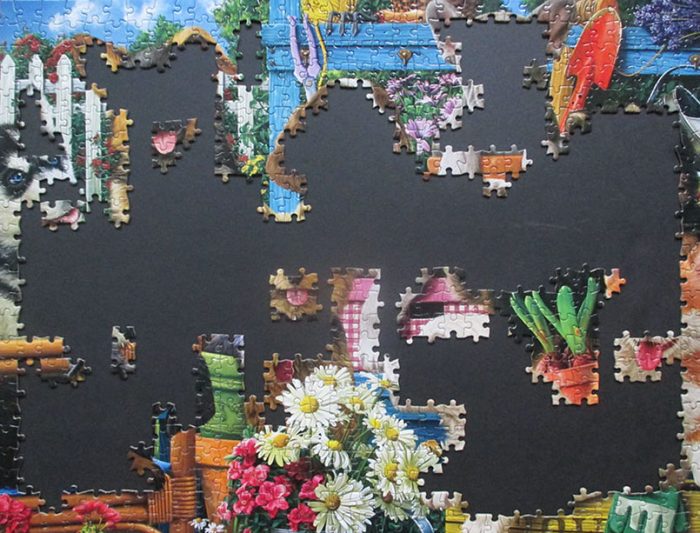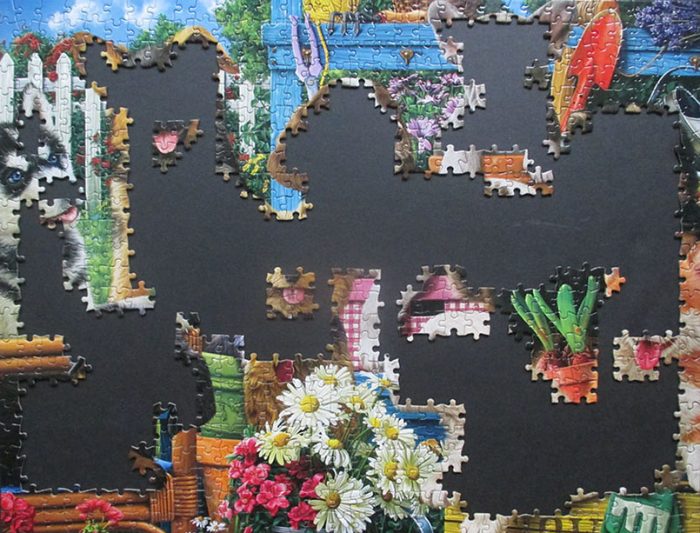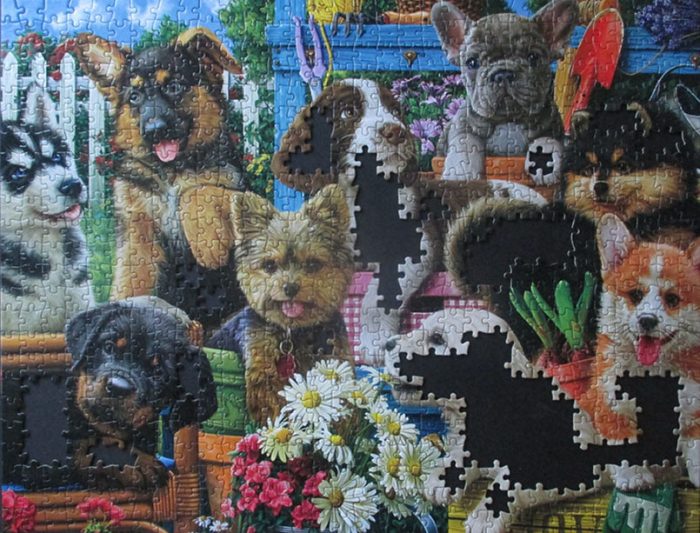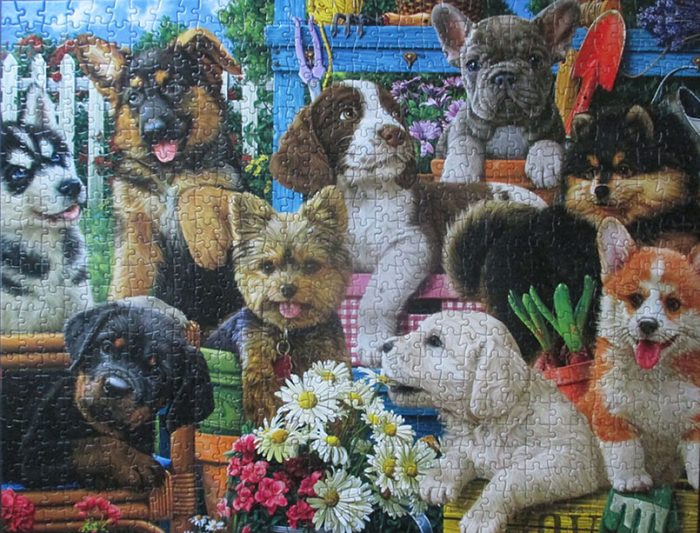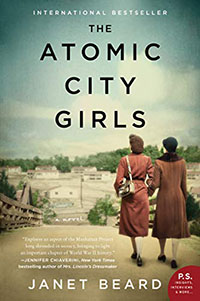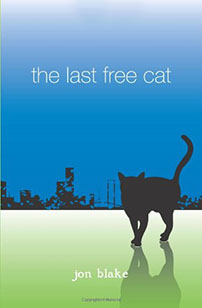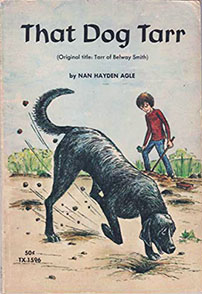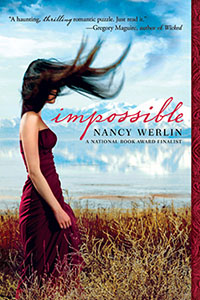Eh. I had high hopes for this book, but they faded pretty darn quick. It was so reminiscent of Eva by Peter Dickinson, disappointingly not as well-written. I really liked the premise and wanted to see where the story went, but had to force myself to finish it. Writing style tells all, shows almost nothing, very straightforward and plain. Which is okay sometimes, but in this case it didn’t work for me. It was dull. The dialog was awkward all the way through. Even believing that the protagonist, Lucy, had grown up in the Congo alone with her scientist father who spoke very formally, she still didn’t sound right. I kept thinking: who talks like this? why does it all sound off? Not to mention there’s plot holes galore, inexplicable things happen that you’d roll right over if it were a J Fic novel, but in this case I couldn’t buy it. Well.
Premise: Lucy is half human, half bonobo. Her father was researching bonobos (pygmy chimpanzees) in the Congo for some twenty-five years, and did some genetic engineering tinkering adapting a female bonobo to have some human genes, so that he could artificially inseminate her with human sperm. Thus Lucy was born. Raised in the jungle for fourteen years with her father among the bonobos. Then war broke out, the father killed, another scientist with a research camp nearby -Jenny- saves Lucy at the last minute and brings her home to the States. She’s unaware of Lucy’s real parentage at first, hoping to find some living relatives. The truth comes out eventually.
Jenny wants to help Lucy adjust and simply live life as a normal teenage girl. But everyone who meets her can sense something is different though it’s hard to pick up on (she looks almost exactly human). I did enjoy the descriptions of how Lucy perceived things differently, with her half-ape nature: sensing non-verbal communication from all the animals around her, having superior hearing and strength, etc. Her longing for home in the jungle clashed with her eagerness to fit in with human peers, but she soon found herself on the run for her life instead, when news finally gets broken to the public about Lucy, the first human/ape hybrid. Lots of people are willing to just accept her and support her desire to live a normal life, but plenty more are up in arms in outrage at her existence, insisting she is no more than an animal, has no human rights, etc. She gets kidnapped by government baddies who put in her in a lab for experimental purposes, and it is – of course- horrible. Can she escape? where will she go? is her adopted human family in danger? the end of this book reads like a fast-paced thriller movie. Last few pages really took me by surprise, it didn’t go where I expected but I kind of like that. It was strange that the final chapter was narrated in first person, when the rest of the book it had been third. Also jarring that for most of the book she mentioned getting “messages” from animals around her, but without putting it into words. Suddenly near the end a rabbit and then a crow speak to her in full sentences, which felt out of place. But there’s lots of things that feel out of place in this story, which is why I was unable to suspend disbelief and actually enjoy it. Sigh.

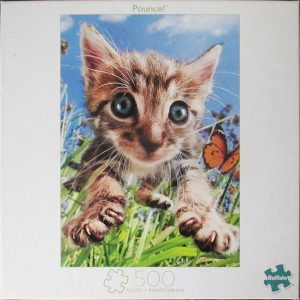 Another cute puzzle that turned out to be more of a challenge than I expected! The photography ones are always hard. But it’s extra-satisfying to see the picture clarify as you fit them all into place. I especially liked the big blue eyes on this one, just bugging out at me through the whole process, ha. Felt disappointed at the end to wind up missing one piece, right in the middle of the face (not too noticeable if I have the puzzle on a dark board, but still). I swapped for this puzzle and feel pretty sure I was told it’s complete- so either the sender was dishonest, or I myself lost a piece. Still searching the floor, just in case. Probably pointless, as my cat got on the table at one point (usually chairs are moved in a way he can’t jump up, but someone else had put one back and left it there . . . ) and it’s quite possible a piece stuck to his paw and fell off again who-knows where. It’s happened before.
Another cute puzzle that turned out to be more of a challenge than I expected! The photography ones are always hard. But it’s extra-satisfying to see the picture clarify as you fit them all into place. I especially liked the big blue eyes on this one, just bugging out at me through the whole process, ha. Felt disappointed at the end to wind up missing one piece, right in the middle of the face (not too noticeable if I have the puzzle on a dark board, but still). I swapped for this puzzle and feel pretty sure I was told it’s complete- so either the sender was dishonest, or I myself lost a piece. Still searching the floor, just in case. Probably pointless, as my cat got on the table at one point (usually chairs are moved in a way he can’t jump up, but someone else had put one back and left it there . . . ) and it’s quite possible a piece stuck to his paw and fell off again who-knows where. It’s happened before.
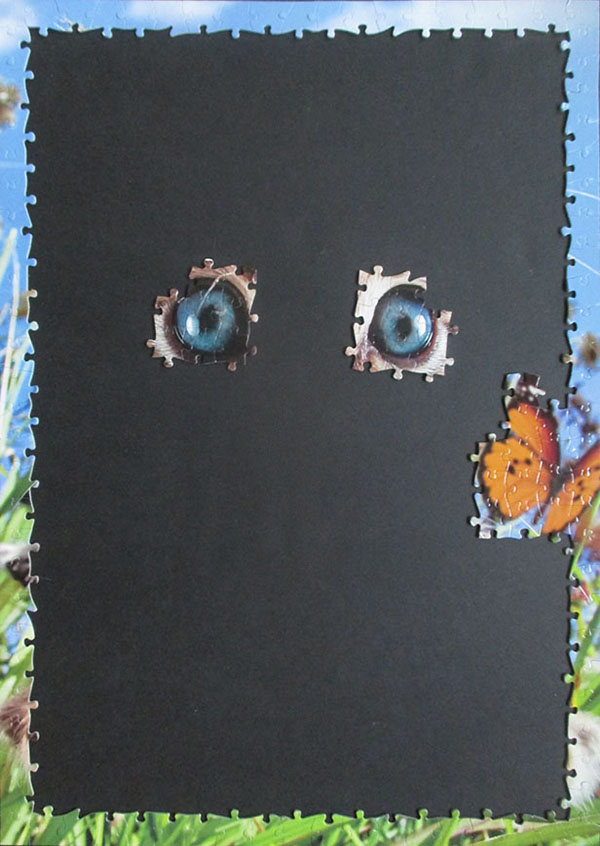
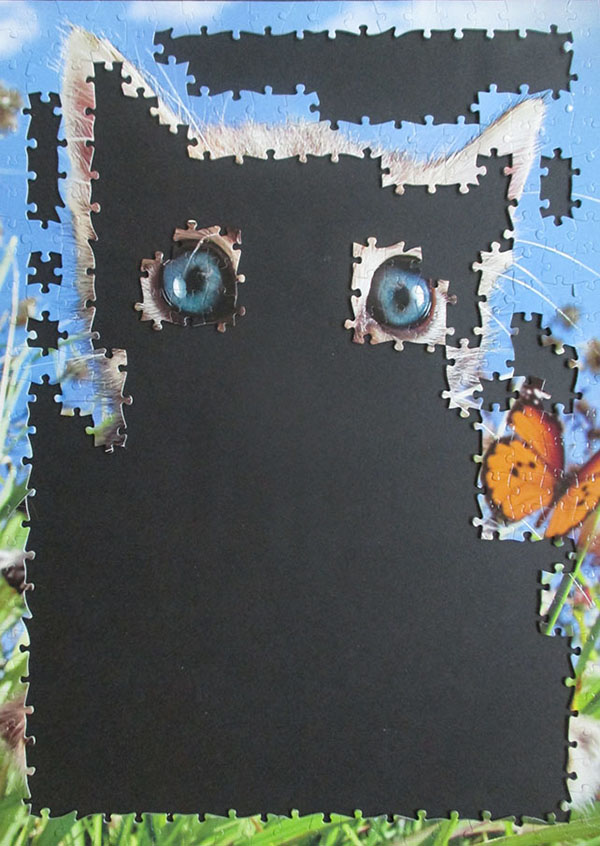
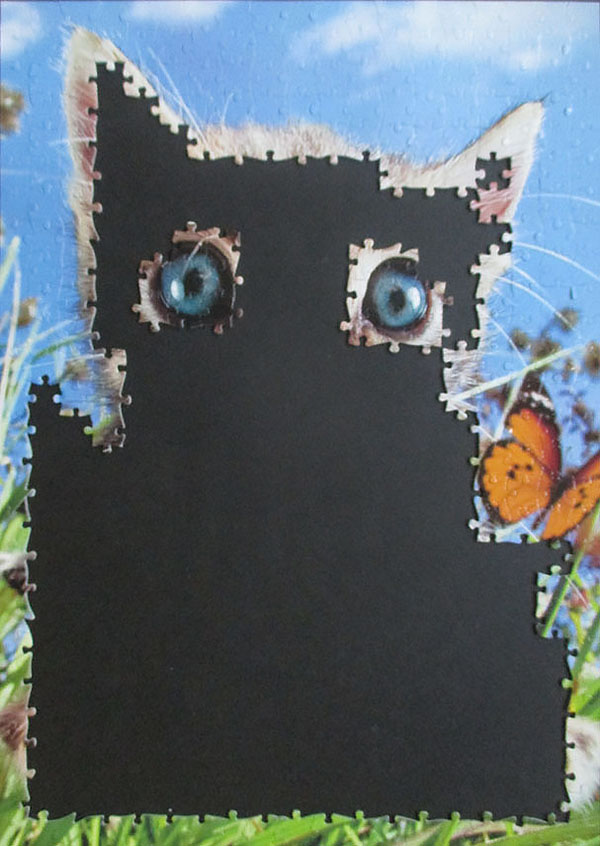
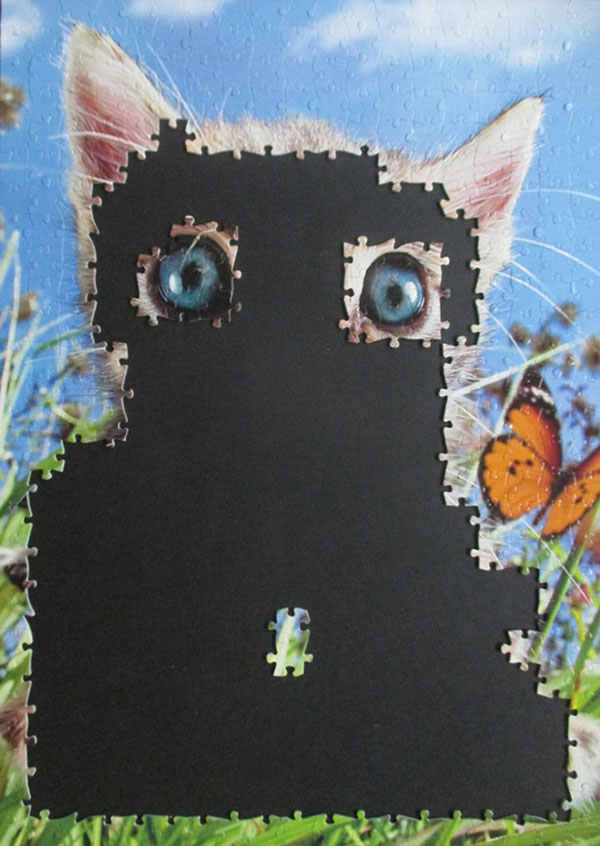
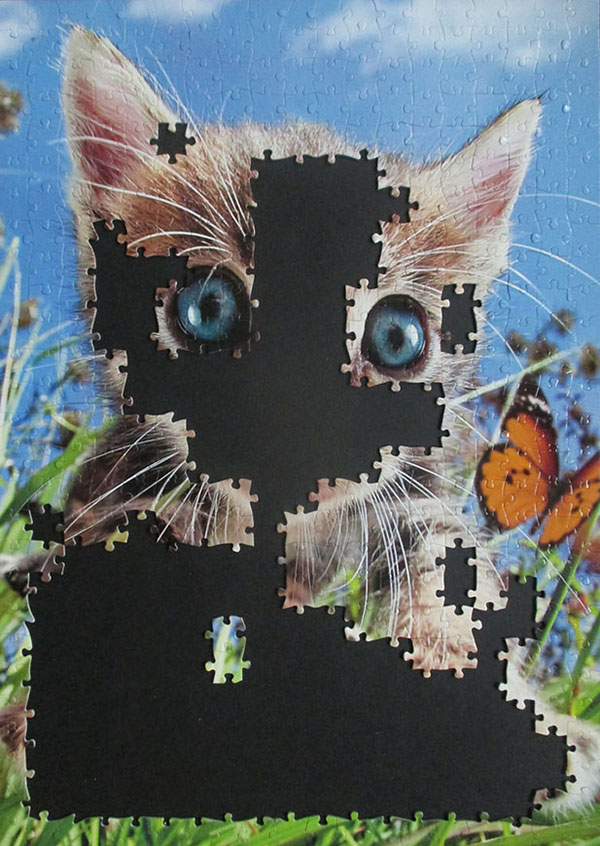
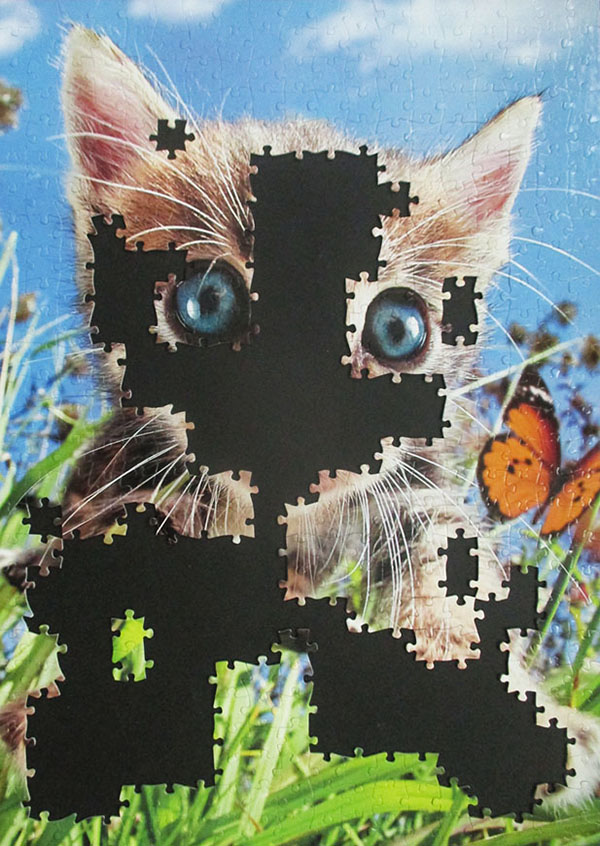
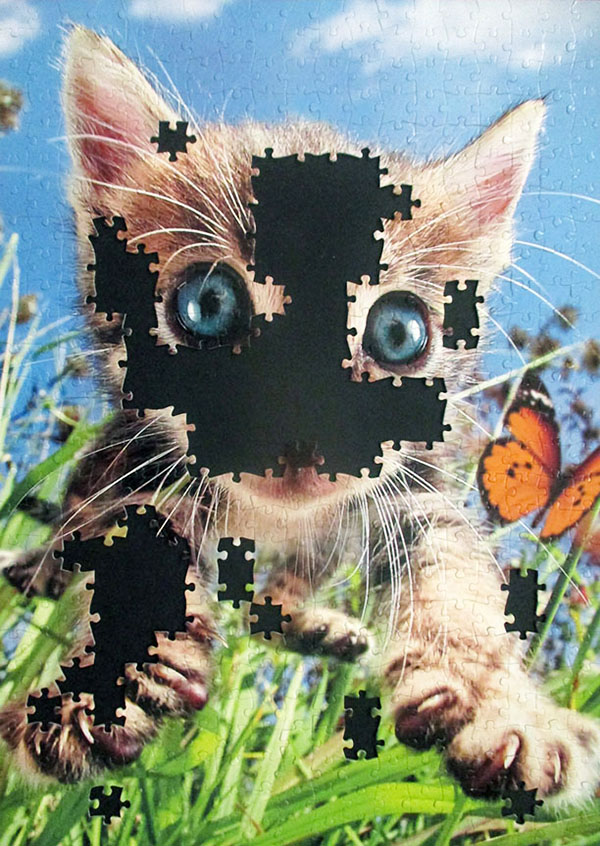
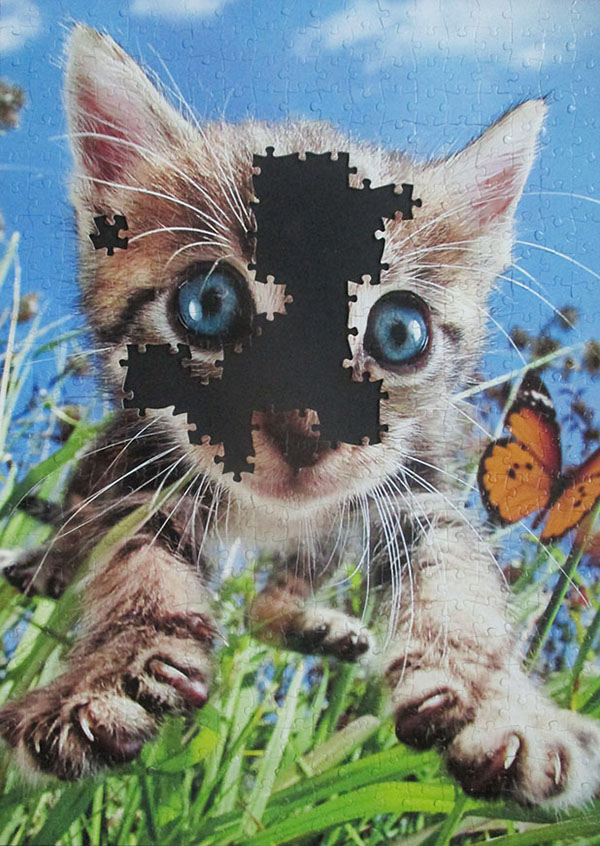
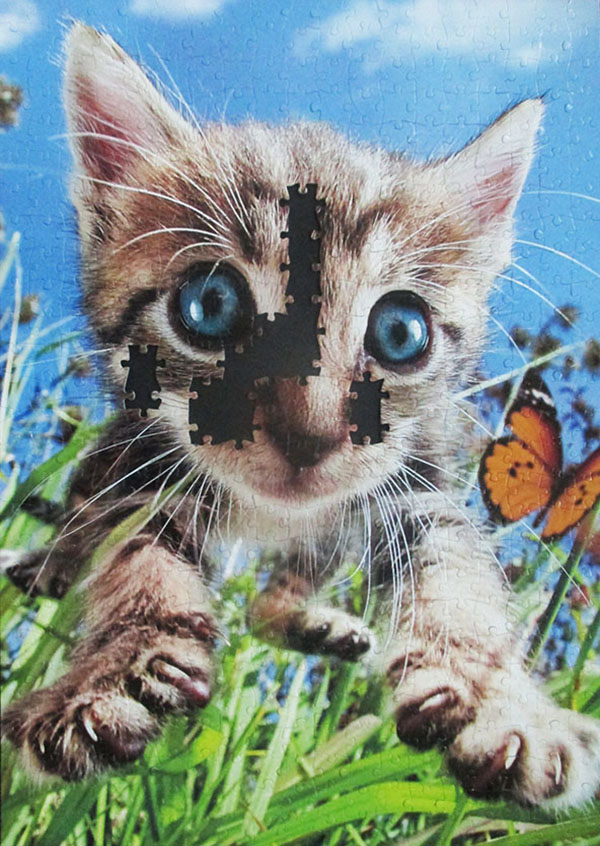
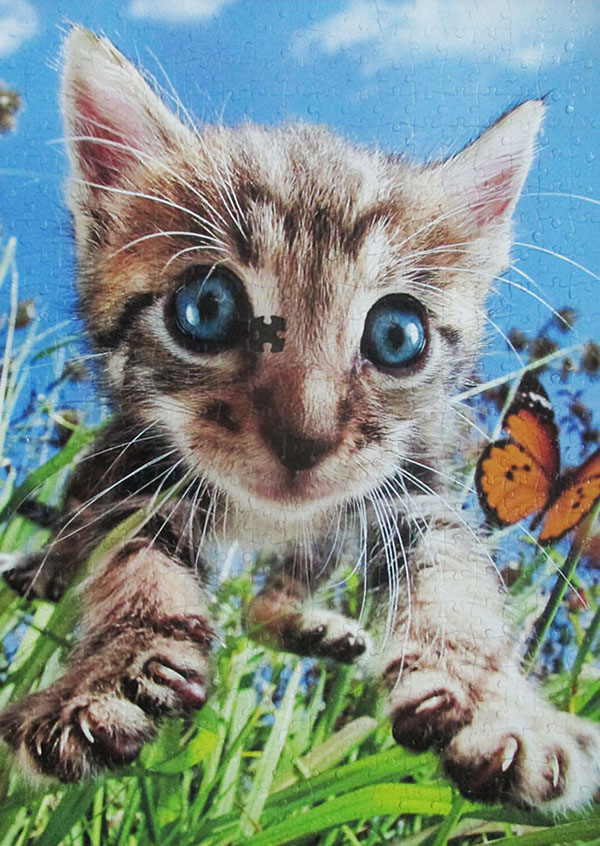
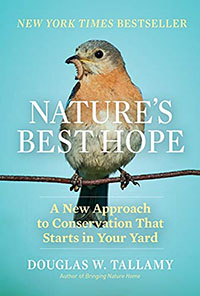

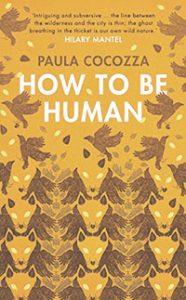
 Endearing puppies, although rather ridiculous (in my opinion), how they’re all crammed into the picture. The shepherd looks rather goofy, but I really like the sweet spaniel, the charming frenchie and yorkie. Corgi looks a little too orange, I kept thinking: are they really that orange? should be more of a golden color . . . Regardless, I really enjoyed the visual texture of the fur- so I did all that last, plus it was easier to pick out the bright colors from the jumble of pieces first. This one had a pretty standard piece cut, except for some funny wedge shaped arms. Funny in a good way. My only (minor) complaint is the pieces have some glare, and they don’t fit snugly, so hard to move more than two attached pieces at a time. But I didn’t have to shift many sections around. And that does make it easy to disassemble with just crumpling my fingers in from all the outer edges, at the end. A quick, fun and definitely cute puzzle!
Endearing puppies, although rather ridiculous (in my opinion), how they’re all crammed into the picture. The shepherd looks rather goofy, but I really like the sweet spaniel, the charming frenchie and yorkie. Corgi looks a little too orange, I kept thinking: are they really that orange? should be more of a golden color . . . Regardless, I really enjoyed the visual texture of the fur- so I did all that last, plus it was easier to pick out the bright colors from the jumble of pieces first. This one had a pretty standard piece cut, except for some funny wedge shaped arms. Funny in a good way. My only (minor) complaint is the pieces have some glare, and they don’t fit snugly, so hard to move more than two attached pieces at a time. But I didn’t have to shift many sections around. And that does make it easy to disassemble with just crumpling my fingers in from all the outer edges, at the end. A quick, fun and definitely cute puzzle!